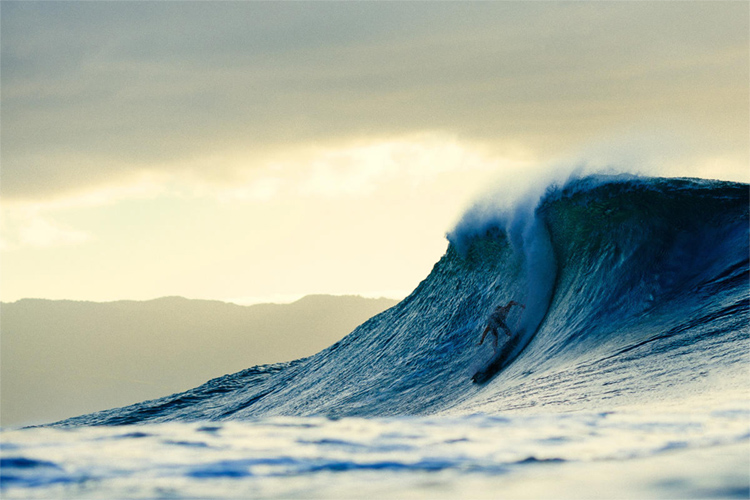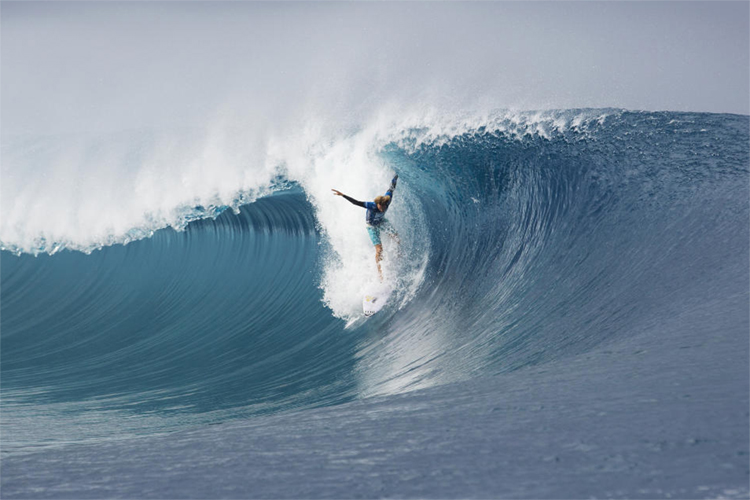Whether you're behind, on, or under the peak, it's important to know where to position yourself in a wave to maximize tube time.
Late take-offs can be complicated to master, and on several occasions, they result in more or less painful wipeouts. The trick is to pop up quickly and optimize the bottom turn.
There are three scenarios in which late take-offs can be useful.
Taking Off Behind the Peak
The first one is when you're surfing an A-frame wave, and you're behind the breaking section.
Whether you're going left or right, just avoid taking off at the center top of the wave.
Why? Because the closer to the peak you are, the more you'll have to stall into the barrel. However, it will ultimately come down to the size of the wave.
In smaller waves, you want to be closer to the peak so that you can take off and stall and maximize tube time in a short section.
In heavier and bigger waves, you should position yourself further away from the breaking lip, where it is easier to take off.
All you'll need to do is one pump to shoot through faster and backdoor the whole section.

Taking Off On the Peak
It happens all the time, although it is not the ideal situation to be in. Taking off on the pitching section is not an easy thing to do, but it is definitely makeable with practice.
So, when you're forced into an airdrop, you must remember to put all of your pressure on your back foot, tail, and toes.
Because the wave wants to suck you up its face, you need to lean back on your toes so that your board and fins dig in, catch the face and slow you down up the wave.
Taking Off Under the Lip
Taking off under the lip of a fast-breaking wave is one of the most challenging drops you can be forced to make.
Being under the lip of a steep wave requires you to be quick and precise.
The first thing you need to do is paddle as fast as you can to try and beat the speed of the wave and stay underneath the lip.
Why? Because the wave will try to suck you up the face. Basically, you want to be in the middle of somewhere as far down the wave as you can.
Then, you need to make sure that as soon as you stand up on the board, your arms and shoulders are parallel to the wave.
Once the board finishes the drop and the fins engage, pump and pull the board underneath you, avoiding the fast-moving foam ball.
Finally, remember that with freight train waves, you have to paddle fast at an angle to try to catch up with the speed of the roller before popping up quickly and riding down the line.
